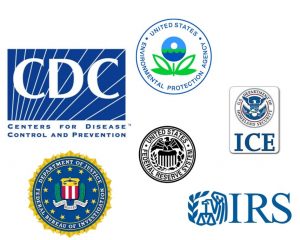LatinaLista — No Child Left Behind (NCLB) was a program that was supposed to revolutionize teaching in the country by establishing new rules and benchmarks to ensure children were learning. Yet, the unthinkable has occurred.
As a result of the policies in NCLB, studies are finding that instead of more children learning, more children were finding themselves in trouble with the law and many introduced to the juvenile justice system for minor offenses.
In a joint position paper, titled Federal Policy, ESEA Reauthorization, and the School-to-Prison Pipeline, authored by six organizations and endorsed by the Council for Exceptional Children, children and education advocates outlined the root causes of failure of the NCLB and what its impact has been on the children, families and communities.
Below is an excerpt of the joint paper. The full paper lists recommendations to Congress on how to dismantle the school to prison pipeline.
In the nine years since Congress reauthorized the Elementary and Secondary Education Act (ESEA) as the No Child Left Behind Act (NCLB), startling growth has occurred in what is often described as the “School-to-Prison Pipeline” – the use of educational policies and practices that have the effect of pushing students, especially students of color and students with disabilities, out of schools and toward the juvenile and criminal justice systems.
The School-to-Prison Pipeline operates both directly and indirectly. Through the misapplication of zero-tolerance school discipline, schools directly send children and youth into the juvenile and criminal system by criminalizing a wide variety of student behavior.
The dramatic increase in the use of these extremely severe disciplinary practices has resulted in hundreds of thousands of arrests and referrals of students to the juvenile and criminal justice system each year.
Many – and perhaps most – of these school-based arrests are for misdemeanor offenses that do not pose a serious, ongoing threat to school safety and would once have been addressed by a teacher or principal but are now falling to the police and juvenile courts.
Schools have relied increasingly on police and juvenile courts to handle school disciplinary matters. NCLB funds support the hiring of school-based law enforcement personnel, and the law encourages the referral of students to law enforcement for school-based behavior.
While there are legitimate purposes for these sections of the law, in practice they have too often contributed to the needless criminalization of children and youth.
All of these factors have contributed to dramatically increased use of exclusionary discipline and worsening graduation rates. In fact, our national suspension and expulsion rates are at all-time highs, and both have risen dramatically since 2002 – the year NCLB was enacted.
The expanded role of police in school disciplinary matters has led to a sharp rise in the criminalization of children and adolescents for relatively minor, developmentally normative behavior. And our national graduation rate is at its lowest level since 2000-01.
While these dynamics are affecting students nation-wide, they have been especially damaging for students of color and students with disabilities. Indeed, as the rates of punitive discipline have increased, racial disparities have only continued to widen.
For example, Black students are now three times as likely to be suspended and three-and-a-half times as likely to be expelled as White students. These racial disciplinary disparities are mirrored by disparities in academic achievement, as graduation rates continue to be far lower for students of color than for their peers.
The dramatic rise in the use of high-stakes testing and “zero-tolerance” school discipline should be especially alarming because we now have ample evidence that both of these approaches have been largely unsuccessful in achieving their intended results.
It is imperative that Congress take significant steps to address the causes and consequences of the School-to-Prison Pipeline. This crisis has been truly devastating for children, families, and communities, and it has contributed to the creation of an oversized justice system that strains local and state budgets across the country.





